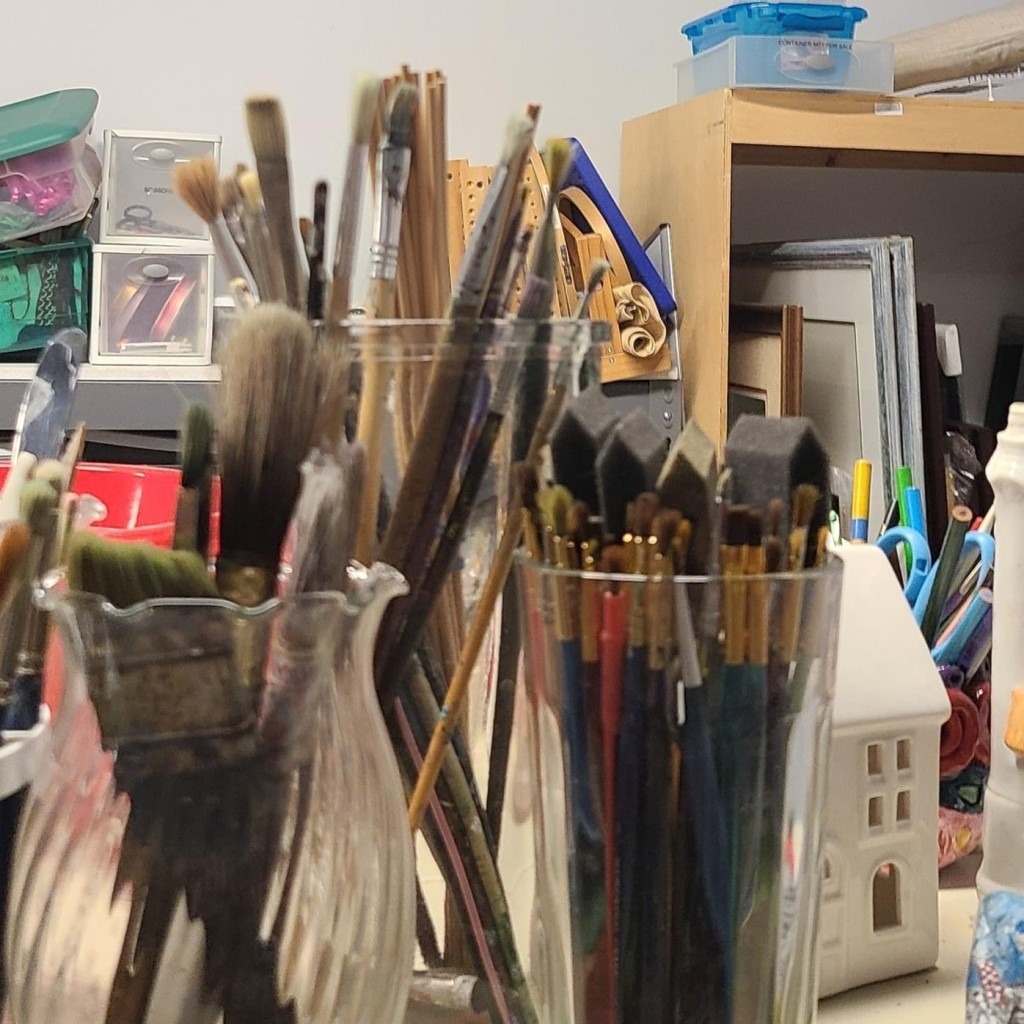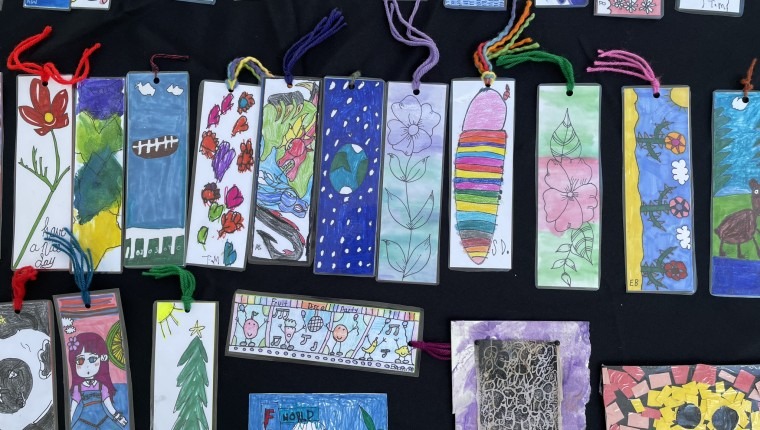How Creative Clay Teaches Students
to Build a Creative Life
. . .
Creative Clay hosted their first Friday Art Market of the school year on September 1 with art, live music and pizza cones. We sent arts writer Jen Ring to learn how Creative Clay programs like Friday Art Markets prepare students with intellectual disabilities for life after high school.
You survived high school. Now what?
For students with intellectual disabilities living in Pinellas County, the choices are Pinellas Technical College or Creative Clay. Both options are part of Pinellas County Schools’ Transition Program, which helps students with disabilities transition from school to work.
At P Tech, students prepare for manufacturing, transportation, healthcare, food prep, construction, billing and tech careers. At Creative Clay, they learn the business of art.
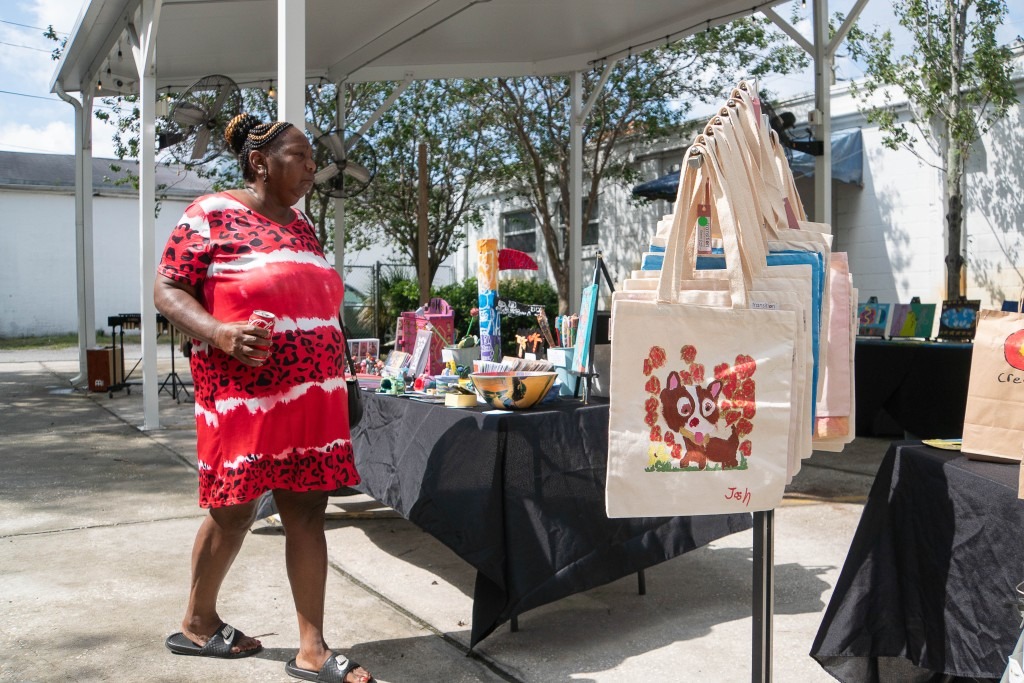
Parenting experts rarely list art among the life skills families should teach their kids. But, just as sports teach teamwork, art teaches creative problem-solving.
Creative Clay has spent the past two decades teaching life skills through the arts. In the process, they’ve created a model worthy of study and emulation.
Providing Vocational Training
Through the Arts
“A lot of parents get a little nervous,” says Creative Clay C.E.O. Kim Dohrman. “Like, what is my child going to do with job training if it’s just sitting around and making art all day? But that’s really not what it is.”
Creative Clay’s Transition Program is vocational training through the arts. Students choose to join in their senior year of high school.
“Students defer their diploma,” PCS Extended Transition teacher Lauren Gentry explains, “so they get an extra three to four years. And this is the opportunity they have to learn about employment skills, work maturity, and just life skills in general.
“But we use art as our vehicle to get those skills.”
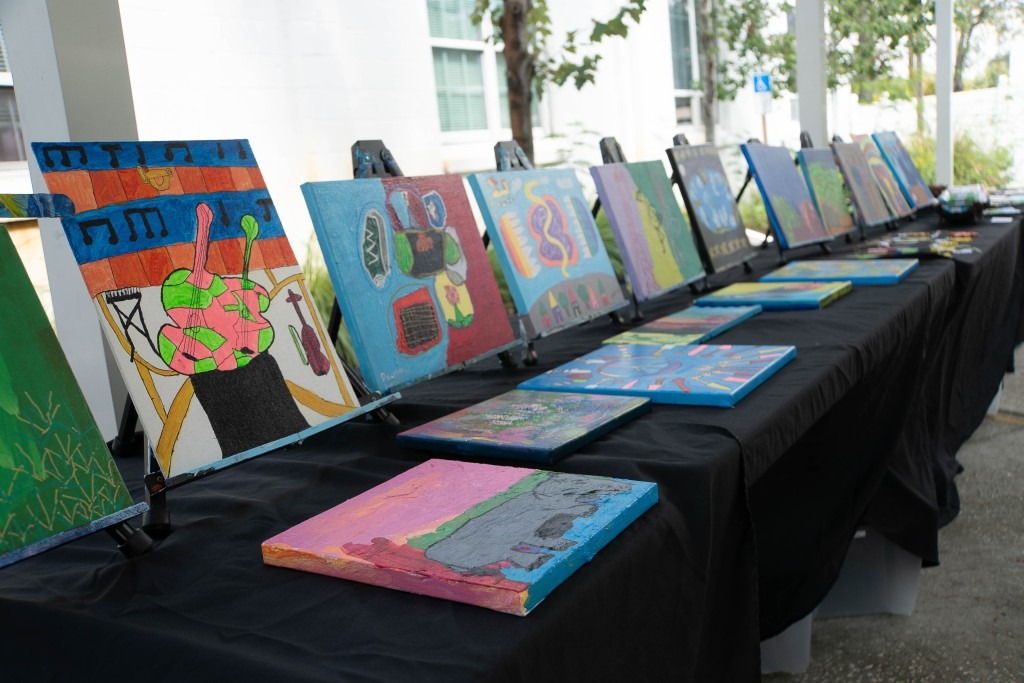
Not everyone who enters Creative Clay’s Transition Program wants to be an artist. Some don’t have any art experience at all – they just want to participate in community outings. Others come with a portfolio of visual artwork.
No matter where they are on the spectrum, Creative Clay teaches them the social and entrepreneurial skills that come with being a working artist.
“They learn social skills, they learn independence, they learn marketing,” Dohrman explains. “They learn all of those qualities that are really transferable when they go out to get a job later.”
How does Creative Clay
teach these skills?
Through community partnerships, classroom instruction, mentorship and real-world experiences like First Friday Art Markets.

Through Community Partnerships

Building relationships in their community is essential for both artists and businesspeople. Following the adage, “It’s not what you know, but who you know,” getting out and interacting with people in the community is vital to discovering new job opportunities.
“The rate of isolation and loneliness among people who have intellectual and developmental disabilities is higher than the typical population,” says Dohrman. “It’s important that we create community spaces to allow for relationships to build so that people aren’t isolated and lonely.”
As she walked me through Creative Clay’s main gallery, Dohrman showed me the results of several Creative Clay collaborations.
Pictures on the wall remind her of the time Creative Clay member artists visited the St. Petersburg Opera Company to see Fidelio, which inspired several paintings by Creative Clay artists.
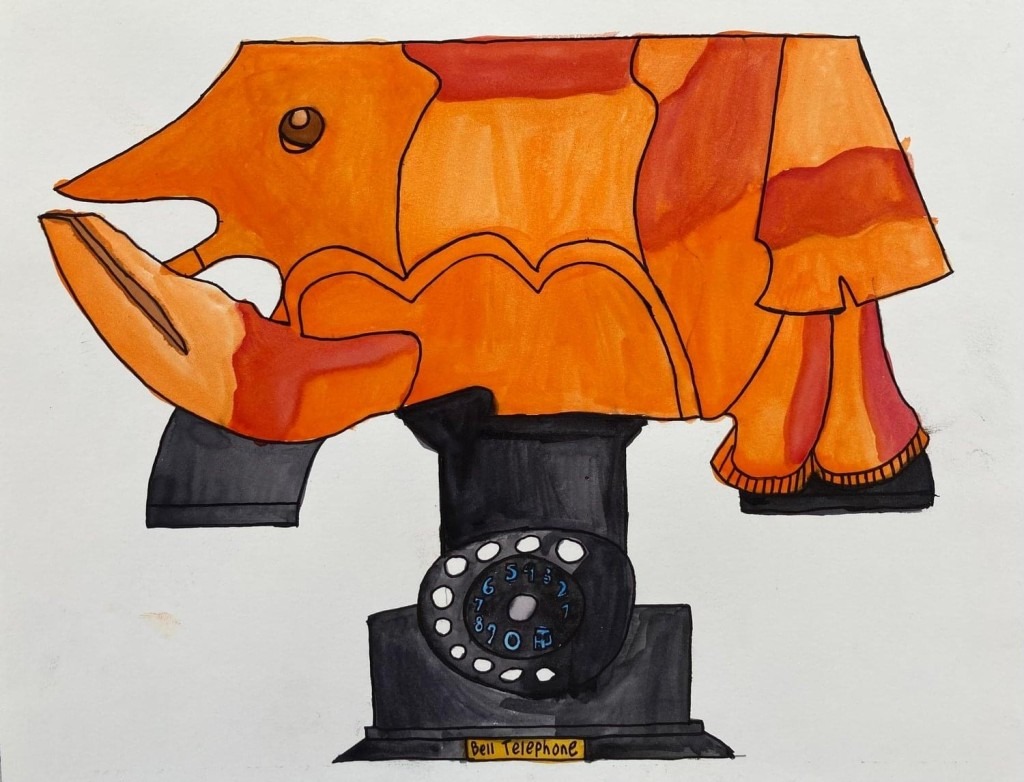
Next, she points out a group of notecards with paintings inspired by Salvador Dalí’s artwork.
“We sent [The Dalí Museum] several images of Dali-inspired work, and they picked out the ones that they thought would be great on greeting cards,” she tells me. “Now we have a whole display at The Dalí Museum shop.”
Creative Clay artists also volunteer in the community, making art with seniors at Sable Palms Health & Rehabilitation Center and Alhambra Health and Rehabilitation Center.
“It’s very free-flowing,” says Dohrman. “It might be collaging one week or doodling another week or getting out the watercolors and putting color to paper. The real emphasis is companionship and community.”
Through Classroom Instruction
Towards the back of the building, Dohrman points out the studio for the PCS Transition Program, where students receive formal instruction in job readiness through the arts.
“This is a very structured environment,” says Dohrman. “Creative Clay has contracted artists that come in each day for four hours, and they have a lesson plan. And part of that lesson plan has a vocational aspect to it so that they’re getting that job readiness, independence and social skills down pat – but it’s through the arts.”
Transition Art Educator Lauren Gentry teaches her students many things besides art, including professional vs. unprofessional work behaviors, goal setting, customer service and communication skills.

When students enter the program, they complete a mission statement together. Gentry’s written it in green marker on white paper. It hangs at the front of the studio.
“Our mission is to build productive and creative minds, a sense of understanding and compassion for others, and the work ethic and positive attitudes to be successful.
“We strive to learn from our mistakes, respect one another, and always put forth the effort to achieve our goals of creating and selling art and finding meaningful employment.”
All this goal-setting, instruction and art-making culminates in Creative Clay’s First Friday Art Markets, which test those new skills.
Through First Friday Art Markets
and other internships
First Friday Arts Markets provide Creative Clay’s biggest teaching moments. Lead teacher Lauren Gentry interviews the students for different market roles, like greeter or sales.
“Every first Friday when we do the market, they learn how to set the market up, they learn about merchandising, they learn how to talk to customers, they learn how to run the point of sale,” says Dohrman. “So by the end of their four years with us, hopefully, they know all of these things that make it easier for them to go out and get a job.”
Students who wish to be career artists create artwork for the Market – part of their education is learning what sells. Creative Clay’s First Friday Art Market includes affordably-priced functional items —handmade bookmarks, greeting cards, stickers, magnets, pins, ceramic garden stakes, tote bags, soap.
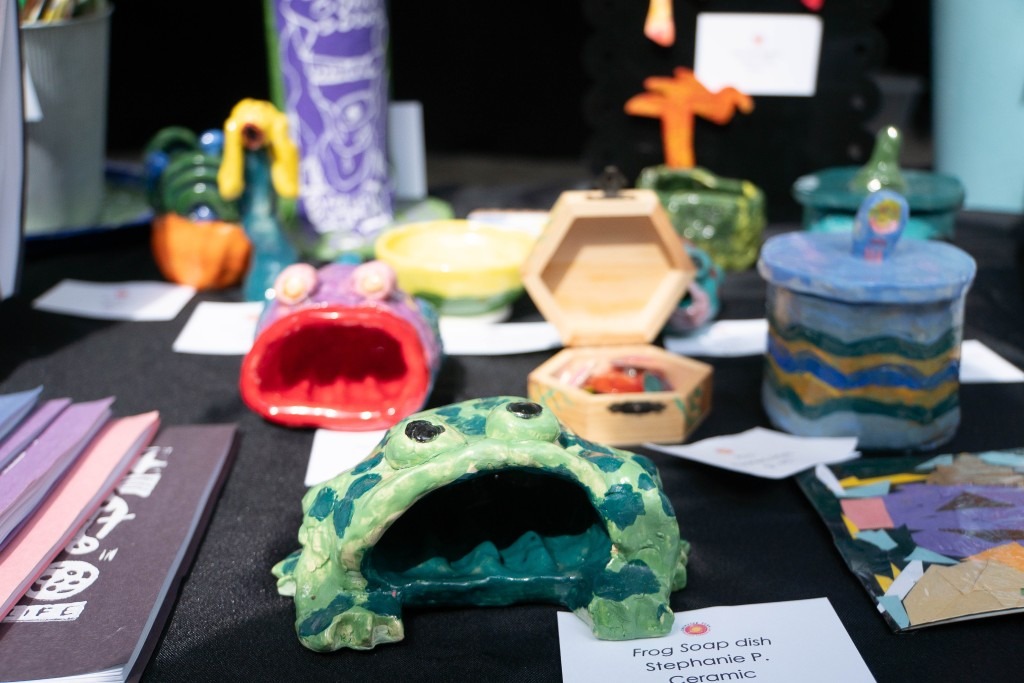
Students learn to make these things from professional artists in the community who visit Creative Clay and share their passion in the form of a creative project.
“We hire professional artists from the community,” says Dohrman. “Everybody brings their own thing. Whatever they love, we talk about that.”
Dohrman describes the art market as “the ultimate internship.”
Gentry describes it as the motivation students need to keep making art.
Gentry tells me at the first market of the season, “After today, I’m going to see a lot more motivation and focus because they’ll know this is what we’ve been working towards. And they can earn a paycheck. We’re the only Extended Transition Program where students can earn a paycheck.”
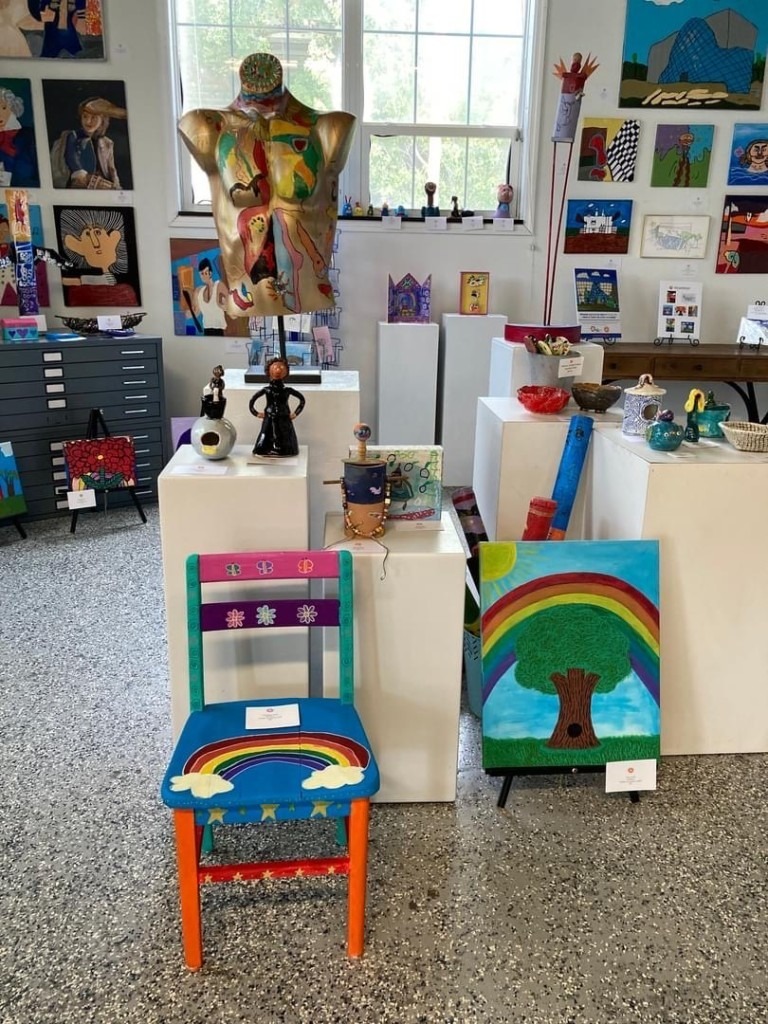
In addition to working Art Market jobs, students can be Gallery Attendants, where they meet and greet customers at the Creative Clay Good Folk Gallery, open 9 am-4 pm on weekdays, and from 5-9 pm during Second Saturday ArtWalk. Or they can be Thrift Store Attendants.
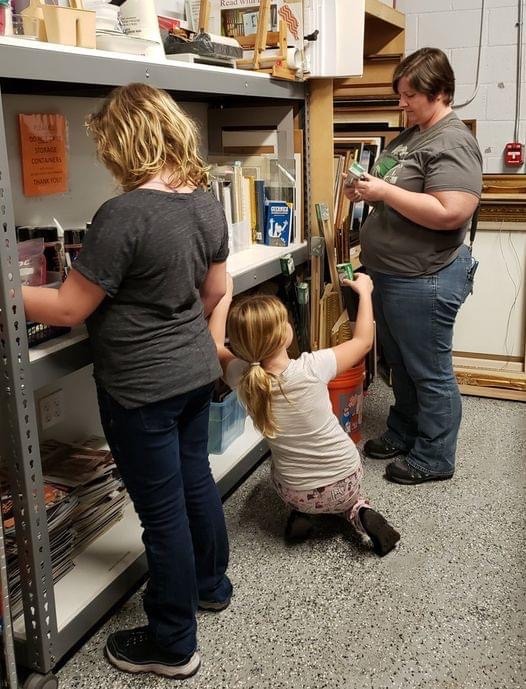
Creative Clay’s Creative Thrift store is full of repurposed art supplies, craft supplies, art books, and school and office supplies – donated by the community for the community. Items people share are often exactly what another artist needs for their next project.
“There are no prices on anything,” says Dohrman. “It’s all pay what you can.”
Studio Assistants help the teachers in the studio.
Dohrman interviews them for each job.
“Then we talk about which of those jobs they want to do,” she says.
Through Mentorship
Students who wish to become career artists after graduating from Transition can receive mentorship from professional artists via Creative Clay’s Artlink or Community Arts programs.
Artlink pairs Creative Clay artists with professional artist mentors for one-on-one instruction and collaboration.
“They go to the artist’s studio and learn about what this artist’s life is like – being a professional artist and making a living as a professional artist,” Dohrman shares.
The professional and student artists sometimes work together, creating a collaborative piece.

In Creative Clay’s Community Arts Program, teaching artists help aspiring artists meet their creative goals.
“The teaching artists’ work is to ensure they impart skills necessary to complete whatever goals [students] have,” says Dohrman. “We consider the art created here to be folk art, and under that genre, people aren’t concerned about the rules of fine art. It’s more about heart and imagination, and it’s my favorite kind of art.”
Through their mentorship, Creative Clay helps artists choose and follow their own path. But critiques are always available for those who want advice on how to make their art more sellable.
Gentry has a binder to help students critique their work, with questions like. . .
- Name one way to improve on the next project.
- How did you show your creativity in this work?
- What do you think about your art?
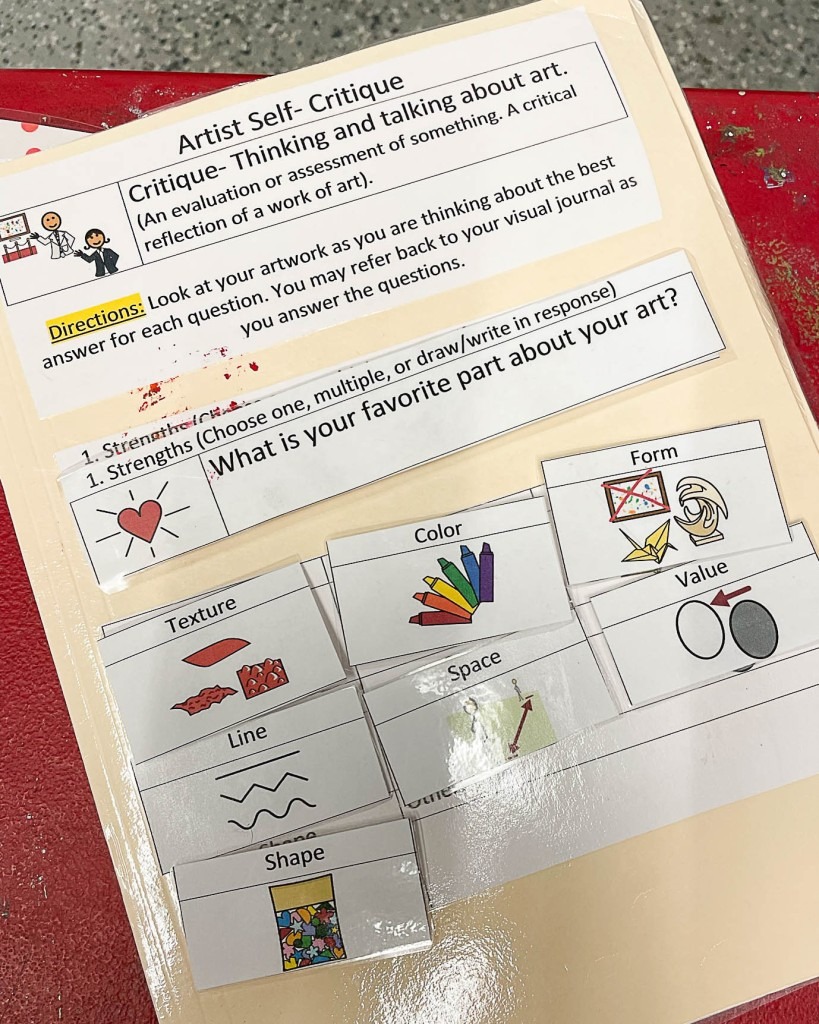
Through Gallery Hopping
Gallery hopping teaches Creative Clay members and students how and where to find inspiration as visual artists. The group’s traveled everywhere from the Ringling to the Leepa-Rattner Museum of Art, The Dunedin Fine Art Center, the Tampa Museum of Art, the Florida Museum of Photographic Arts and Florida CraftArt.
“Wherever there’s art, we’re going there,” says Dohrman. “It’s not only important for all artists to be included in the community, but it’s also important for them to do what other artists do – which is to get inspired by the art that’s going on.”

Through Submitting Artwork
to Gallery Shows
Creative Clay teachers explain gallery standards, commissions and how to price artwork to students. They teach them how to submit work to gallery shows — not just Creative Clay shows, but other gallery shows in the area.
“We submit the art to shows in the community and to our gallery,” Dohrman tells me. “And we talk about what it means to have a commission and understand that they’re getting 50% of whatever they mark their art… We can talk about what goes into pricing the art. And then, what do you need to get to feel good about this?”
Applying to outside shows, students learn how to manage rejection.
“This reality of being an artist is that you are going to submit work, and you’re not always going to get in,” says Dohrman.
The other reality of being an artist is that if you aren’t creating a specific work for a specific show, that piece of artwork might not get seen for a while. Creative Clay teaches students to consider what work community art centers and galleries are looking for before they commit pen to paper.
Success Stories –
Transferable Skills Help Students
Build a Life In and Out of the Arts
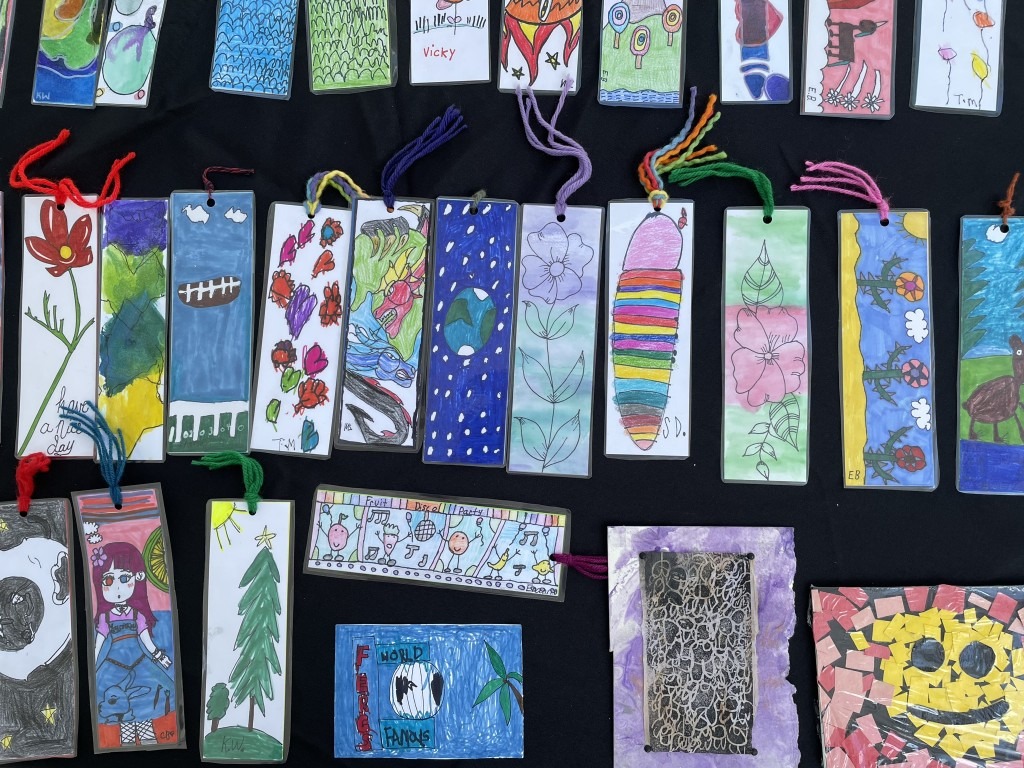
Not everyone can build a career in the arts, but transition students can use the skills they’ve learned at Creative Clay to build a career in another field.
Creative Clay meets with families once a year to set goals for each student in the coming year. Learning to set goals and follow through on them is exactly what’s needed for anyone to build a life they love.
“Maybe it’s a sales goal,” says Dohrman. “Maybe it’s a number of art shows I want to get into. Maybe it’s, ‘I want to perform.’”
Finding Success in the Arts
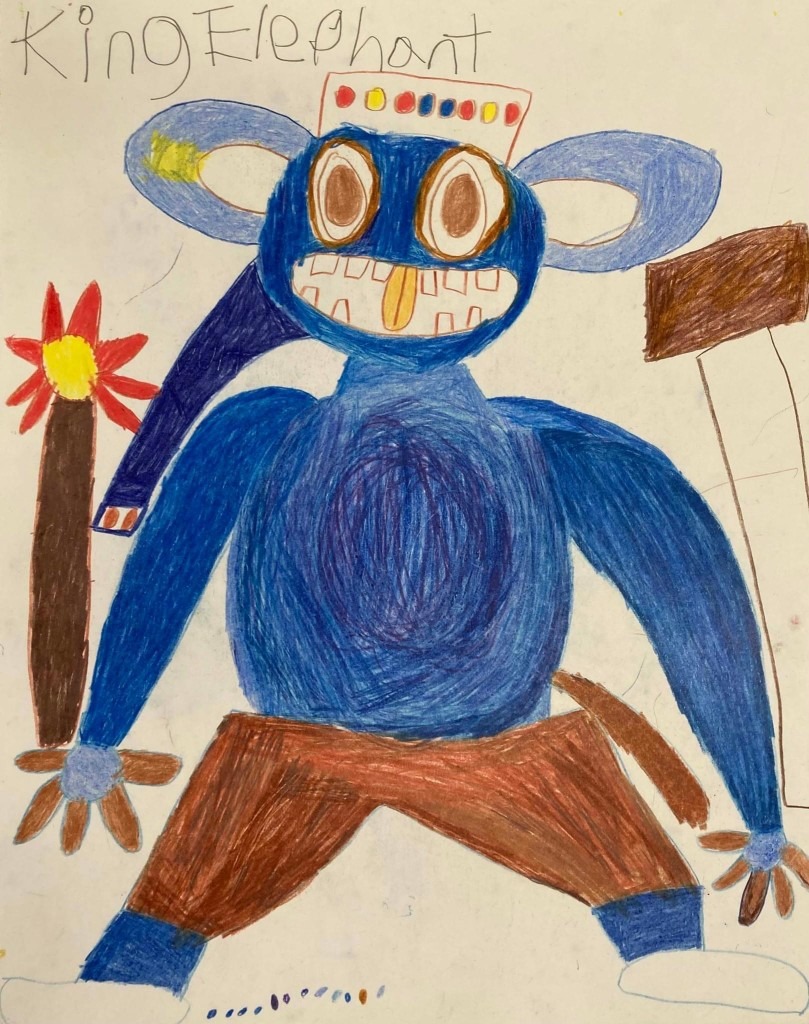
Marcus is an example of one of those students who came to Creative Clay with a portfolio of visual artwork.
“He has a cool book of characters that he’s invented,” Dohrman tells me. “And he loves to talk about his artwork and his characters. He’s got a story behind everything that he does.”
Marcus developed his love of storytelling and drawing from watching Japanese animation. As I listen to Marcus talk about protecting princesses from shadow warriors, I immediately think of how great he would be as a teacher’s assistant or librarian reading to kids.
He once dreamed of being a toy designer.
“But Toys-R-Us went out of business,” he says.
Now, he just wants to create characters and draw Japanese-style cartoons, and that’s exactly what he was doing, as a Creative Clay Member Artist, when I visited. He’s created over 100 thus far, and he names them all.
“Sometimes I just put random letters together to come up with an interesting name,” he tells me.
When I visited, Marcus was drawing a lady elf sorcerer he’d named “Yochun.”
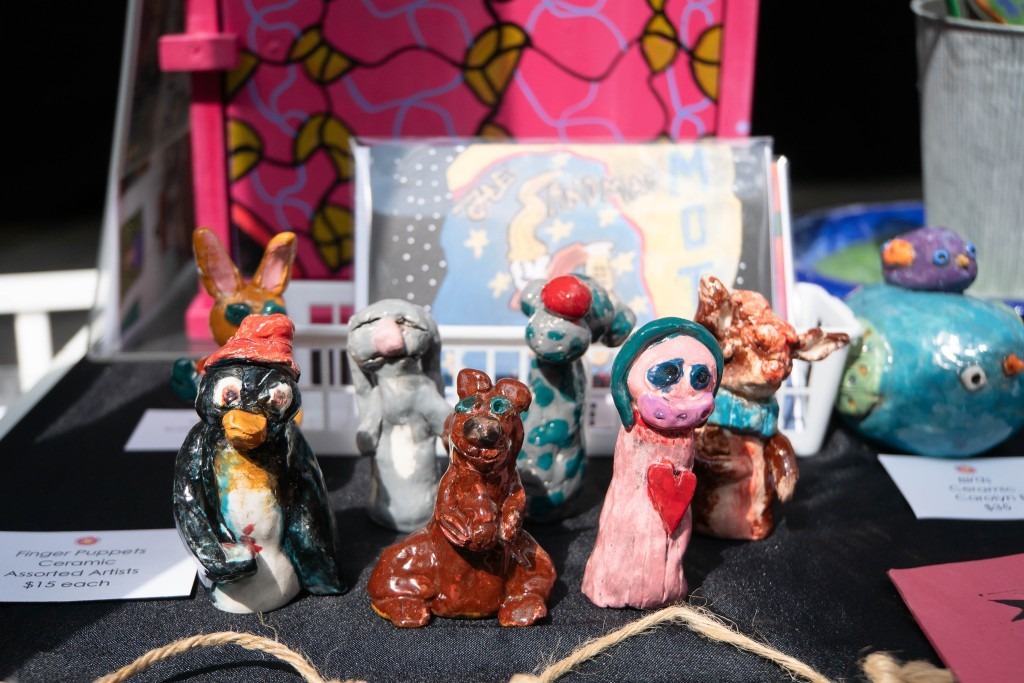
Amanda took ceramics in high school before joining Creative Clay. Her high school program recognized that she was good at art and suggested Creative Clay’s transition program to her.
As the daughter of a photographer, Amanda gained an appreciation for the arts early in life, but what she really loves to do is help others.
“Amanda is naturally caring, kind, patient and helpful,” says Dohrman. “She’s the kind of person that sees something that needs to be done and just does it.”
So Creative Clay hired her out of the Transition Program to be a Teacher’s Assistant.
“I ended up working in the Summer Camp program, and then they ended up hiring me for their program,” Amanda tells me.
Now, she assists Creative Clay Member Artists in the classroom.
“Whenever a Member Artist needs paint or materials, I go and get it, or I help them with a project,” Amanda explains.

Lindsay became an artist after enrolling in Creative Clay’s Transition Program. She now acts as a performing artist at Creative Clay.
Creative Clay’s been interested in performing arts for a while, but they kicked it up a notch in 2019 when they started working with playwright and Arts Coast Magazine editor Sheila Cowley. They’ve collaborated on 11 projects since then – as dancers, actors, songwriters, singers and visual artists, with more in the works.
“In the Artlink program, where we pair the member artists with professional artists, there were lots of performing experiences,” says Dohrman. “We just didn’t have it in our daily program as much.”
“But before we did performances, we did movies,” Lindsay tells me.
“That was back in 2009,” says Dohrman.
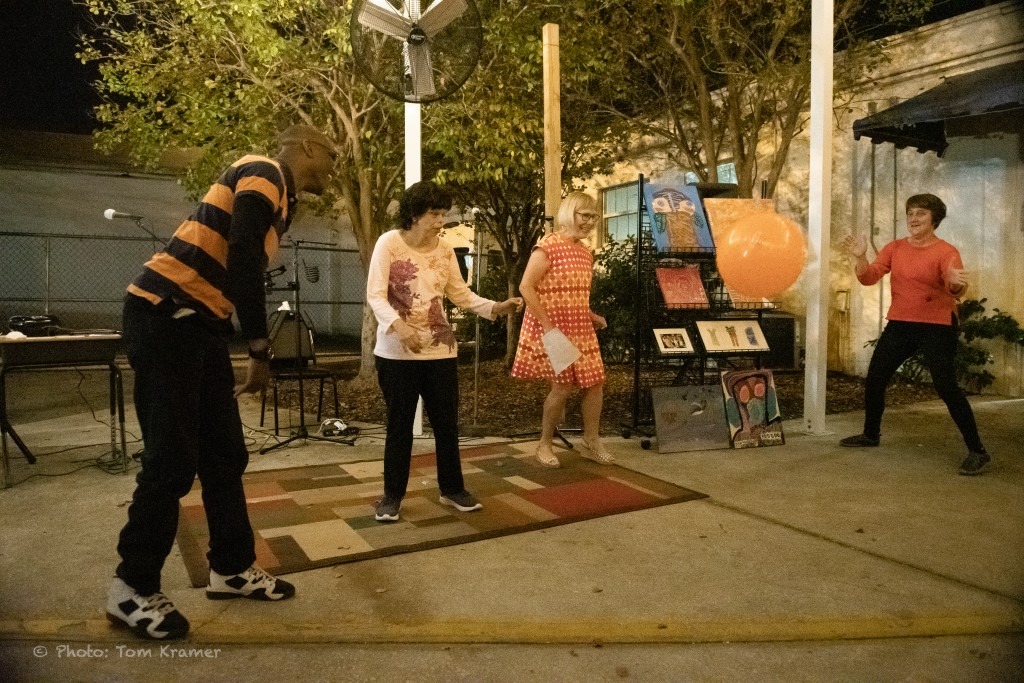
When I asked her what it was about the performing arts that drew her in, Lindsay credits one of her former teachers, who took her out into the world for “community-based instruction.”
“We would go right in the heart of downtown, and we would do this sidewalk chalk art, and that’s when we became artists…”
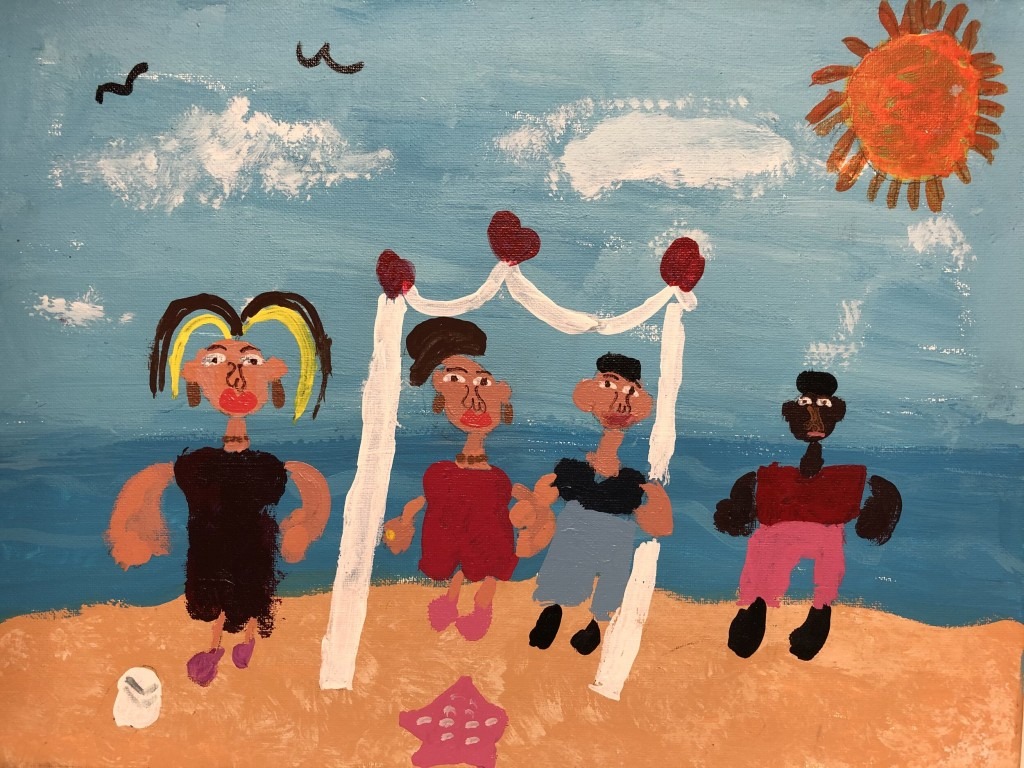
Carla was one of Creative Clay’s first transition students.
“In high school, they asked me if I wanted to go to P Tech or if I wanted to go to transition. My mom said, ‘Why don’t you want to go to P Tech?’ I said, ‘I want to do art.’”
“I’m not really good at computers,” she explains.
“I found my passion for art when I was a junior in high school,” Carla tells me. “A teacher told me, ‘Carla this piece is very nice. You could do art for a living.’”
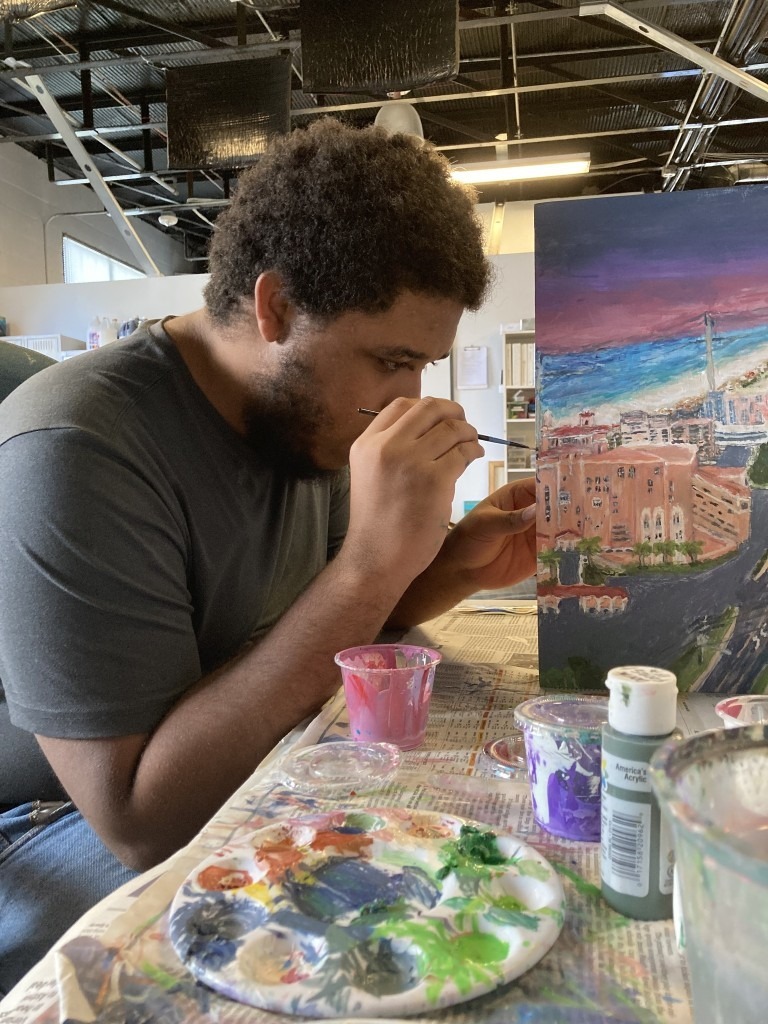
Ashton T., who graduated from the Transition Program two years ago, just had a piece accepted into Chad Mize’s Fun Set, a show about St. Pete at Green Bench Brewing, which celebrates its 10th anniversary this month.
Ashton chose Creative Clay because he knew his talents lie with art. His highly detailed city scenes stand out.
Finding Success Outside the Arts
I never doubted that Creative Clay would create a safe space for individuals with disabilities to make art and build a life they love, but what about local businesses?
Would local businesses acknowledge transition students’ learned skills and hire them for the types of jobs they’d trained to perform?
“We’ve had people go on to get jobs at Publix,” says Dohrman. “A couple of people who do art sometimes and go work at Publix sometimes.”
When Dohrman checks her computer, I’m pleasantly surprised to hear the number of local businesses who’ve hired folks out of PCS’s Transition Program. The list includes Winn Dixie, the Don Cesar, Outback Steakhouse, McDonald’s, assisted living facilities, Sweet Bay, TJ Max, Clearwater Phillies maintenance, Burlington Coat Factory, and some local graphic design firms.
“Having a career as an artist is not easy,” says Dohrman. “Not everyone can make that work. Usually, you have gigs or you might teach a little, write a little. We hold our artists to that same standard. We’re not saying that you have to be here and make it as a career artist.
“[Art is] different things to everybody who’s here.”
